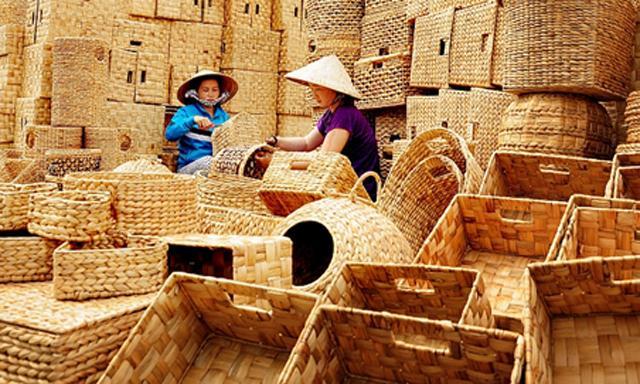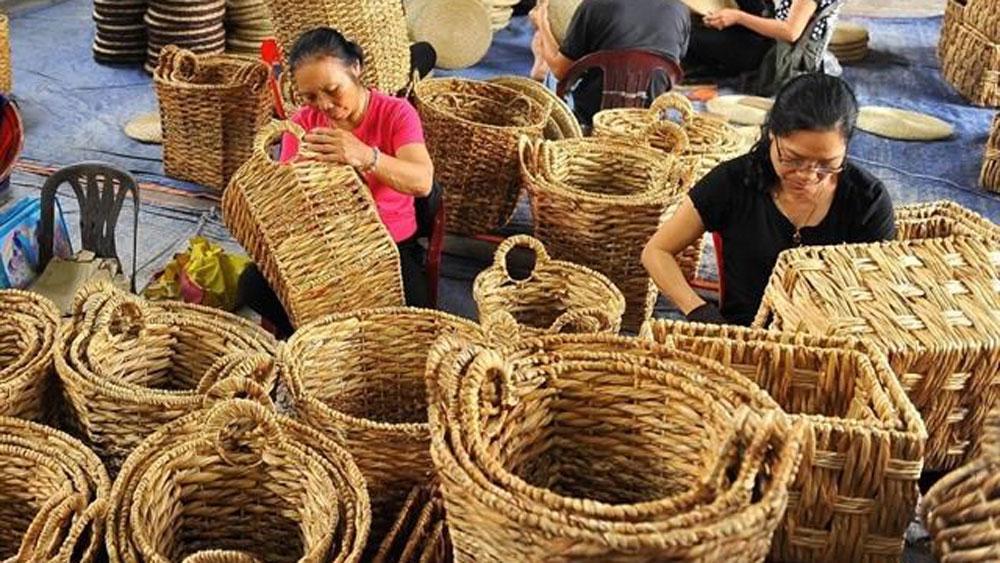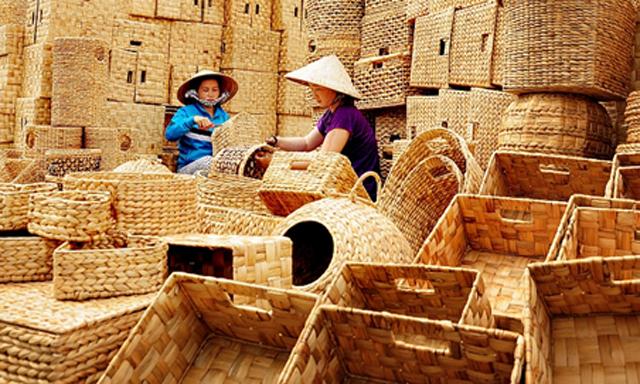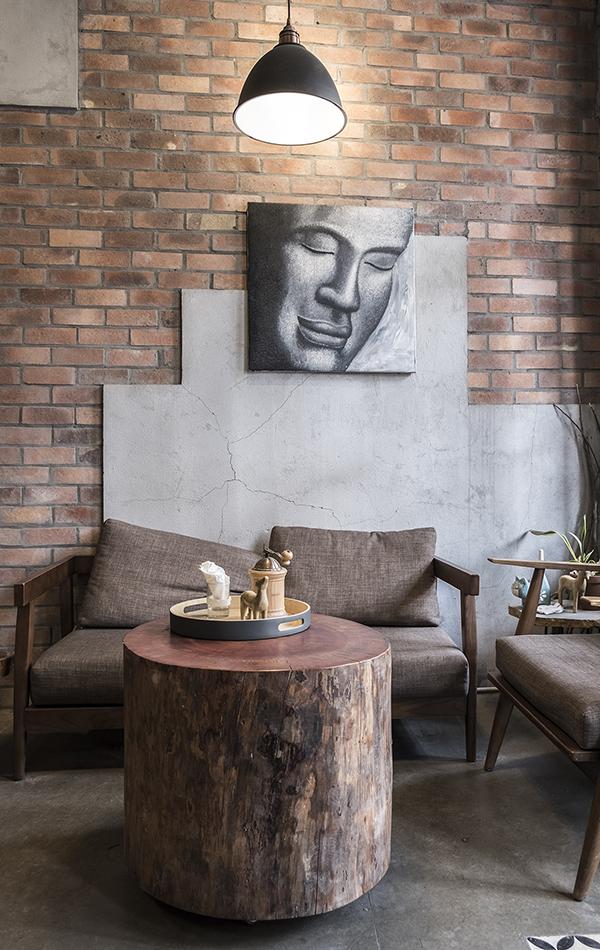
Why are handicrafts important in Vietnam?
10:03 - 18/05/2020
Handicrafts in Vietnam was formed and developed thousands of years ago. Experiencing many ups and downs in the development process, bamboo and rattan handicrafts have a certain foothold in the consumr market.
The Best Handicraft Villages in Vietnam, and Why They're Important
- Bamboo is always a familiar tree for Vietnamese people. Since ancient times, bamboo has been used in agriculture as household products such as chairs, fans, tables, etc… There was a time when people liked modern things, howvever, people became aware of the importance of traditional products. Because they come entirely from nature and are environmentally friendly.
- Vietnam is a Southeast Asian country with the symbol of indomitable bamboo. Therefore, rattan and bamboo export industry is being supported by the government to revive the traditional industry. Currently, Vietnam have exported these handicrafts to most countries in the world and received the acclaim of friends all over the world.
Opportunities of handicrafts in Vietnam
1. Potential market
Nowaday, Vietnam has more than 1,000 rattan and bamboo handicraft villages, accounting for 24% of the total of the villages in the country. Up to now, Vietnam have exported rattan and bamboo products to 130 countries and territories, with an average export turnover of over US $ 200 million / year, accounting for about 14% of total fine handicraft export turnover.
In particular, the US market is leading and accounts for over 19% market share, Japan accounts for nearly 17% market share. However, Vietnam’s rattan and bamboo craft industry ‘s export turnover currently accounts for less than 3% of the world market.

In Europe, retired people have more time to take care of their homes. Therefore, the demand for handicraft products for decoration is increasing. They have trend to go shopping for gifts, souvenirs, including handicraft items, on the occasion of festivals, weddings… Christmas, New Year also affect consumer demand, shopping for handicraft products. For example, in Northern European countries, in the spring, consumers need to buy outdoor handicraft products for garden decoration…
2. Market shares
Meanwhile, Vietnamese rattan and bamboo products still have a modest market share. According to the statistics of Trademap 2019, Vietnam currently only accounts for about 3.37% of the world market share. Therefore, the export growth potential of rattan, bamboo, seagrass and water hyacinth products is still great. In addition to the key markets such as the US and Japan, there are more and more emerging markets, full of potential for our products such as the UK (up 138.47%), Western Spain (up 160.52%), France (up 37.47%), India (up 682.3%), Russia (up 343.74%), Australia (up 24.66%) …
Therefore, the export growth potential of rattan, bamboo, seagrass and water hyacinth products is still great. In addition to the key markets such as the US and Japan, there are more and more emerging markets, full of potential for Vietnamese rattan, bamboo, seagrass and water hyacinth products such as the UK (up 138.47%), Western Spain (up 160.52%), France (up 37.47%), India (up 682.3%), Russia (up 343.74%), Australia (up 24.66%) …

Why are bamboo and rattan handicrafts important, especially in Vietnam?
1. About economy
Currently in year 2019, there are 723/2,017 villages producing handicrafts. And more than a thousand enterprises interested in manufacturing and exporting handicrafts, attracting 342 thousand workers. Every year, our country consumes from 400 to 500 million bamboos and from 600 to 800 tons of rattan and raw materials to produce consumer goods and for export.
The export of rattan and bamboo products contributes to solving the country’s foreign currency situation. On the other hand, the production of handicrafts requires a large initial capital. Therefore, it can overcome the capital shortage situation for enterprises.
This industry not only contributes to export value but also creates jobs for rural workers and ethnic minorities. Handicrafts create more jobs for redundant labor force in rural areas, increases income and improve their lives. According to statistics, on average, handicraft artisans will earn a salary of 3 million/month or more.
Handicrafts industry has brought a stable income to the people. The Ministry of Agriculture and Rural Development identified rattan as one of the major tree species in the export.

2. About society
In Vietnam, rattan and bamboo industry is associated with the lives of people in many rural areas and ethnic minorities. Of which more than one million people live in families with income from this industry.
On the other hand, through the production and export of handicraft products will help many countries in the world better understand the people and culture of Vietnam. It contributes to the rapid integration of the country with the cultures of other countries in the world.
Thus, the export of handicrafts is an urgent issue because it brings a great profit to the country. Because it comes from available materials in rural areas such as rattan, bamboo, seagrass and water hyacinth products and help to solve social problems for the country.

Not only contributing to the export value, the handicraft industry also creates many jobs, helps to improve the lives of workers. Moreover, it preserves and promotes beauty of long-lasting cultural traditions of the Vietnamese nation.
Challenges to Vietnam’s rattan and bamboo handicrafts industry
1. Raw material issue:
Although the opportunity is great, the difficulty for craft villages and businesses is the supply of input materials. Mr. Nguyen Hong Phong, Deputy Director of the local Department of Industry and Trade (Ministry of Industry and Trade), said that if people could only go to the forest in the past, they could get natural rattan and bamboo, the price of raw materials at that time was also not high, only about 30,000 VND/kg of material. Currently, the price of raw materials has increased many times. This factor is a major difficulty and great challenge of localities producing handicrafts.
In addition to ensuring a sufficient supply of input materials, when the Free Trade Agreement (FTA) is signed, the tariff barriers are removed, export taxes with 0%, this is an opportunity for handicraft industry to improve product quality. Especially, enterprises need to meet the standards of technical barriers that countries erect.
However, the majority of enterprises in the rattan and bamboo industry are still developing at a small scale. Over 80% of production facilities do not have enough capital for technical innovation and production scale expansion. Therefore, most of them use outdated technology, equipment, low labor productivity and product quality. Moreover, the product lacks variety of models, limiting the competitiveness in both domestic and export markets.
2. Sustainable solutions
Meanwhile, the supply of input materials for rattan and bamboo export for the past few years has mainly been through small-scale, low-volume, and often fluctuating roads, leading to delivery time. The quantity and quality of raw materials greatly affects the deployment of large orders.
To develop the rattan and bamboo rattan industry in a sustainable way, it is necessary to closely coordinate with craft villages, people, businesses and state management agencies . They need to come up with comprehensive solutions such as planning material areas, building centers for processing, preserving raw materials and renewing product designs.
According to experts, we need to revise and adjust the land use plan. Thereby setting up specific land clearance plans to support units requiring production ground… At the same time, it is necessary to strengthen vocational training, build a team of artisans, support enterprises to develope concentrated raw material areas to supply enough stable materials for production.

